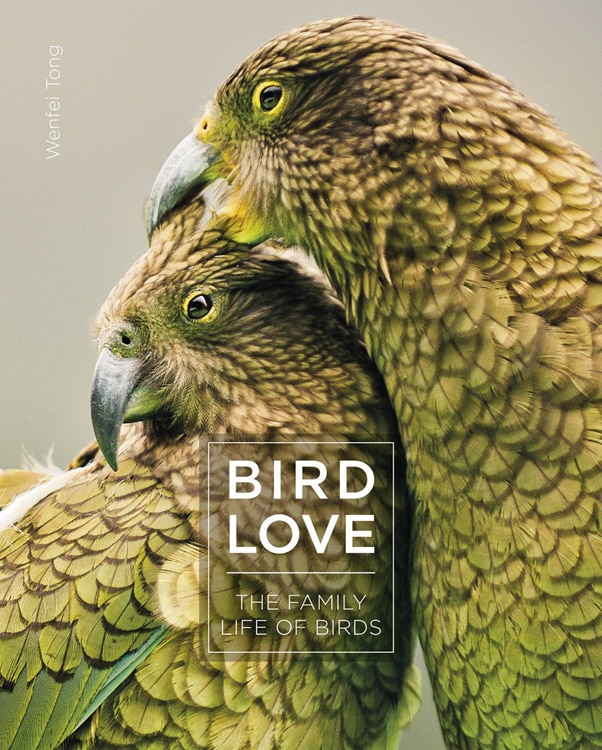| The Family Life of Birds | Wenfei Tong | The Ivy Press | 2020 | Hardback | 192 Pages, 150+ Colour Photos | ISBN: 9781782407485 |
“Across the 10,000-plus species of bird that live on this planet, there is an amazing diversity of behaviours aimed at one simple goal: reproduction. This book is a collection of some amazing examples of these, from elaborate courtship displays that give potential mates information about genetic quality, to intricate nests designed to protect the young from predators and parasites.” – Dr Mike Webster

The Publisher’s View:
More than 90 percent of birds appear to be monogamous, but beneath the surface there is a huge variety of mating systems in play, from temporary monogamy and extra-pair mating to multiple partners for either sex, with some species switching between these as their circumstances change.Discover the amazing array of courtship techniques employed by birds around the world:
– male bowerbirds construct extravagant galleries to attract females
– ospreys bring gifts of food in exchange for sex
– male skylarks perform simultaneous aerial and vocal acrobatics to impress females
– the practice of lekking, where males in a species such as grouse gather to display to females, who then complete reproduction solo, from nesting to raising chicks
Learn how male ornament is used as a sign of quality: when a long-tailed widowbird in East Africa shows off his immaculate 16-inch long tail, he is advertising the quality of his genes. Having somewhere safe to bring up chicks is paramount, and a male with impressive building skills or a nest in a prime location will attract a mate. Bird nests shown here range from nothing but a bare branch on which white terns lay their unshielded egg, to the enormous mud and stick mounds constructed by hamerkops. Taking security to the extreme, female hornbills seal themselves in to their tree hollow nests, relying on their mates to deliver food through a narrow slit.But it’s not all about males seeking to impress or dominate females: sex roles can be reversed, and Bird Love includes examples such as the black coucal, whose females are 70% bigger than males, sing to defend territories, and leave the males to perform all childcare duties. The limited availability of nest holes for the eclectus parrots of Melanesia means that females fight each other to secure a home, and the winner may have up to seven mates. Which partner looks after the chicks can depend on the population’s male-female ratio, and either sex can desert the nest in search of further matings to secure another clutch of chicks. The different levels of parental care are revealed, such as preferential feeding, allowing an insurance chick to die, and how songbirds teach their young to sing their species-specific song.
The essential insight to bird family life, Bird Love is richly illustrated with stunning colour photographs, and regular Backyard Bird boxes in each chapter showcase familiar species from around the world.
The Author: Dr Wenfei Tong is a research associate at the department of Organismic and Evolutionary Biology at Harvard and an assistant professor at the University of Alaska, Anchorage. She received a bachelor’s degree in evolutionary biology from Princeton, and a PhD in biology from Harvard. Her postdoctoral research at the University of Cambridge focused on the evolution and genetics of brood parasitic birds in the Zambian grasslands. At the University of Montana, she has helped develop citizen science monitoring for threatened grassland birds. Wenfei writes popular science articles for nature nonprofit organizations, as well as book reviews for Times Higher Education. She is a guest lecturer for Lindblad National Geographic Expeditions and runs a nature tour company based in Montana. She lives in Missoula, Montana, USA.
Fatbirder View:
What struck me most from this wonderful book is that nature, even within one family is extraordinary diverse. Mating, pairing and offspring rearing is as varied in the avian world as in the human realm, maybe even more so. The breadth of knowledge of the author is displayed on every page and is really well presented.
Its entirely admirable that someone should know as much as they do with a depth of scientific understanding yet be able to convey that to the lay reader, succinctly, accurately and readably.
I’m still reading and re-reading and have been charmed, captivated and entertained, but mostly greatly educated by this work.
It gets my highest recommendation.
Fatbirder
